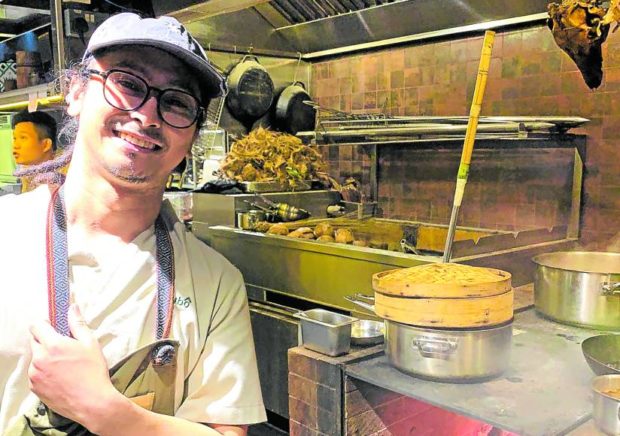A dynamic young chef named Kurt Sombero, who hails from Marbel, South Cotabato, has opened his own restaurant in Singapore.
The young chef is a graduate of the College of St. Benilde, where he earned a degree in Hotel, Restaurant and Institutional Management. After college, he trained under well-respected chefs in the industry, including Cyrille Soenen, while the French chef was at Impressions Restaurant at Resorts World, Andre Chiang at the chef’s eponymous showroom Restaurant Andre in Singapore, and Dave Pynt of Burnt Ends fame.
In Singapore, he became head chef at Meatsmith Little India, a restaurant that combines the flavors of India with traditions of the great American barbecue—where he received rave reviews.
Just last July, he spread his Filipino wings to open his own restaurant, Kubô along Robertson Quay in Singapore.
Ode to Mindanao
The name is a nod to the chef’s Mindanaoan roots. Kubo is short for bahay kubo, which translates to house of straw/nipa thatching. Sombero grew up in this kind of hut in rural Mindanao. It was also where he first learned to cook and source ingredients, recalling that he used to accompany his grandmother going to her food stall in the local market.
While servers are quick to clarify that this is not a traditional Filipino restaurant, you cannot miss the chef’s love for all things Filipino. The interiors showcase Philippine-made lamps, baskets, furniture and textiles. The chairs are made of unmistakably Pinoy solihiya. The music playing in the background is classic Pinoy rock.
Pugon
Best of all, the cooking technique employed is something that is also uniquely Pinoy: with the use of a pugon or a wood-fired oven. Using wood to cook your food is an incredible technique that results in a more tender, more flavorful dish.
Most Filipinos are familiar with the use of pugon for pandesal. But using the pugon for other dishes is possible too. Chef Kurt uses it for a side of corn, his response to the corn on a cob, as well as to grill seafoods and meats.
What you use to make the fire also adds value to the dish. Instead of wood, Chef Kurt sometimes uses coconut husks, which add another layer of aroma and flavor to whatever he is cooking.
Classics
On the menu are familiar dishes, e.g., adobo; sisig; piniritong isda. But when you take a bite, you realize there is something unique about this dish. Even his rice on the menu seems like simple white rice, but then arrives in the bamboo culm that it was cooked in.
Chef Kurt is brilliant in presenting modern versions of classic dishes. The sinigang is deconstructed and does not come in the form of a soup, but when you take a bite, you know these are the sinigang flavors you grew up with. The sisig is unique in that it does not come in a sizzling plate but instead cooked to reflect the exquisite notes from the pugon. The barramundi is his take on a simple piniritong isda, but the use of the pugon again makes this fish sing. Of everything I tried, it was the fish dish that really stood out. Chef should have more of these to make his audiences appreciate the pugon.
Modern Pinoy
The restaurant, coowned by Tora Widjaja, has great potential. At the moment, only few seem to know about it. But hopefully soon, word gets around that a Pinoy from Mindanao is making his generation’s versions of the dishes we grew up with. The chef is evidently passionate about his craft, and when you meet someone like that, you know it’s only a matter of time before he really shines. Do try to visit when you are in Singapore! INQ
For restaurant details, visit kubo.sg on Instagram. More from the author at margauxsaledo.com
